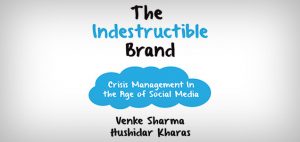
On September 2003, worms were found in a bar of Cadbury chocolate in Pune. In December 2013, Justine Sacco, the then communications director of InterActive Corp. posted a tasteless tweet linking AIDS and race. On May 2015, the Food Safety and Standards Authority of India (FSSAI) ordered Nestle India to recall one of their most popular products, Maggi noodles, after higher than permissible amount of lead was found. These are three different crisis situations for three popular organisations. While Justine was sacked by the company immediately as a means of damage control, Cadbury and Nestle India went into war mode and made sure they solved the problem, online as well as offline. Six months after the incident, Cadbury regained its dominant 70% market share and by November 2015, Maggi was back on the shelves. What both these brands did was quite similar – they refuted the accusations, took immediate action on the ground and kept communicating with the consumers. Along with replying to individual customer queries, Maggi India’s official Twitter handle even replied to celebrities like Madhuri Dixit, sharing data from new tests that showed the noodles were safe to consume.
This is the era of social media. Whether or not a brand is on social media, their consumers are. Digital marketing practitioner Venke Sharma and marketeer Hushidar Kharas, give an in-depth insight into exactly that – how brands must have a well-oiled crisis machine in place to prevent loss of money, reputation, and brand love. The book preps you to be crisis ready, with the help of numerous brand examples like Maggi and Cadbury, who vindicated themselves. But not all brands are lucky or well-equipped. There are times a brand is destroyed and fails to come out of the crisis. On April 2017, United Airlines’ flight 3411 from Chicago to Louisville was apparently overbooked and they tried to offload one of their passengers by force, who resisted. A video made by at least two other passengers of this horrible manhandling incident took no time to spread like wildfire on social media. United Airlines found themselves in a global crisis of an epic proportion. Many fliers claimed to cancel their United tickets and vouched never to fly United again. The company continued to face fierce criticism globally and their shares fell around 4%, temporarily wiping close to US$1 billion off the company’s total market value! These incidents are an opportunity for brands to show the customers how responsive they are or how much pride they take in their products/services. Unfortunately on United’s case, it spiralled out of control and lead to a huge loss of faith. They didn’t seem to have a crisis management team in place, or it didn’t execute it if it had one.
One must remember, that crisis used to exist even before the social media era. What has changed is the rate of dispersion and the dynamics between consumer expression, mass media, and government auction. The current distrust of mass media in India makes sure that a substantial amount of power is vested on social media platforms, with very little responsibility. Without timely and direct action, it can snowball and go downhill very quickly for a brand. However, that the brand isn’t always at fault and a consumer may be wrong or has a bad intent. Unilever acted as a responsible brand when a video went viral claiming that their product Lipton Green Tea contained worms, in the Middle East. The company picked up the issue quickly and replied with another video showing that ‘worms’ shown in the previous video are simply lemon flavour pieces that dissolve in hot water. It even made Food Health Inspection department of the Municipality of Dubai to visit their facility and put a statement on their social platforms declaring that the tea was safe to drink. So, if social media can put you in a crisis, it also helps you to come out of it victorious.
The book stresses on the fact that crisis management is no longer a part-time job that can be handled by the marketing or corporate communications team, only when there’s a crisis. Every company must hire a Consumer Commitment Officer (CCO) who will head a crisis squad from the PR, product, legal, operations, sales, HR, and marketing teams; complete with a crisis playbook. It is the CCO’s job to make sure that the brand is fulfilling its promise to the consumers 24x7x365. The book urges brands to draw up trend lines for the brand’s negative data on a daily/weekly basis to identify spikes or troughs. Too often a complaint gets ‘closed’ rather than resolved, and it takes one angry customer to reach a crisis situation, especially if other consumers were suffering in silence and decide to jump on the bandwagon. The CCO must identify the root of the issue, fix it promptly and make sure it doesn’t recur. That can happen when everyone huddles and puts together a crisis playbook, a comprehensive list of steps that needs to be taken when crisis hits.
The book is a sure shot guide on how to build a crisis-ready organisation, complete with numerous examples and solutions. It even sheds light on social media monitoring, social listening and how to secure a brand’s digital assets like their official Twitter, Instagram or Youtube channels. It isn’t preachy and is easy to read and understand. The best thing about The Indestructible Brand is it not only tells you how to be ready for the crisis, but also how to execute it and what to do once the storm has passed. One tends to relax once a crisis gets resolved, but the writers advice that the organisation should create a record of the crisis and append it to their crisis playbook. Consisting of eight chapters, this book is a quick read and should be read by all organisations, so that they’re well prepared to face a sudden backlash, any given time.